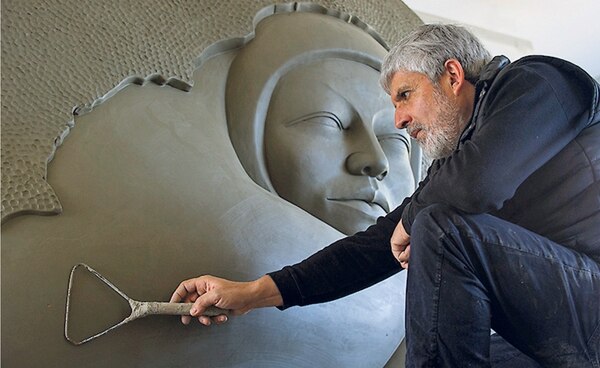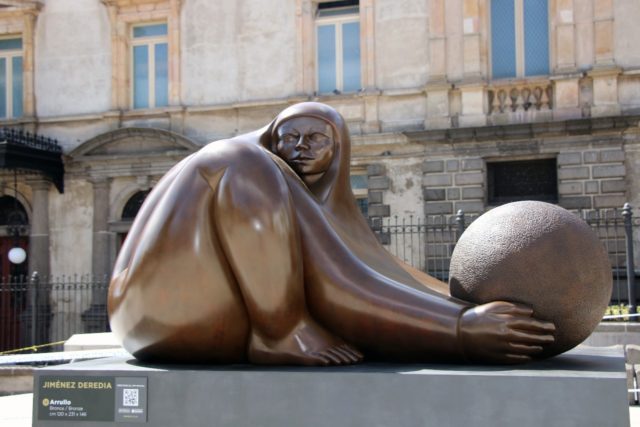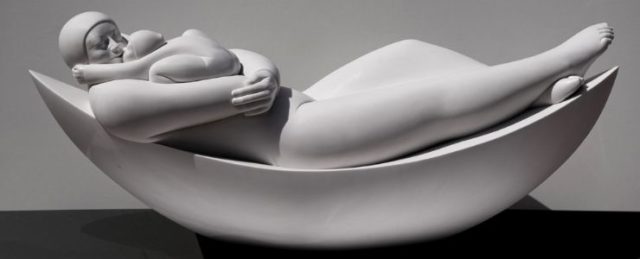
All in Costa Rica is incredible. From the rural farming villages to the brightly colored rain forests, there is always something to see and admire. The country also treasures a wide variety of art and history museums and has given the world many renowned artists. On this occasion, we will talk about Jorge Jiménez Martínez, more commonly known as Jorge Jiménez Deredia.
Jorge Enrique Jiménez Martínez (Heredia, October 4, 1954) is a sculptor and architect of Costa Rican origin, better known as Jorge Jiménez Deredia. Having started his career in his native country, Deredia moved to Italy in 1976, where he has developed much of his work, receiving international acclaim and unique opportunities, perhaps the most important being the first Latin American sculptor to place one of his works at St. Peter’s Basilica in Vatican City, and also to be the first contemporary Latin American artist to exhibit his works in the Roman Forum, among other places of the Italian capital.
Biography.
Jiménez Deredia discovered sculpture at the age of 13, in the workshop of the “Liceo de Heredia”; it was there that he realized his ability to create art. A few years later, Deredia began carving portraits into pieces of wood and stone, with the support of the artistic workshops at the Castella Conservatory, located in Barreal de Heredia.
A short time later he focused his attention on the development of organic forms and pre-Columbian art. It is at this time that he graduates from high school and begins to visit frequently the Faculty of Fine Arts at the University of Costa Rica.
Visit Italy.
In 1976, the Italian government promoted a competition aimed exclusively at foreign students, where a 7-month scholarship would be granted that would allow the winner to learn the techniques of marble making in the city of Carrara, Italy. Deredia was, eventually, the chosen one. In this way, Deredia leaves to Italy in October of the same year with his wife, Giselle Zamora.
While in Italy, Deredia had the opportunity to observe in person the works of different Italian artists, studying and drawing the great works by masters Michelangelo, Gian Lorenzo Bernini, Filippo Brunelleschi, among others. When the time for the scholarship ended, Deredia decided to stay permanently in Italy to fully devote herself to sculpture. In this way, he continued his studies at the Academy of Fine Arts of Carrara, to learn the techniques of sculpting marble and bronze.
Training in Italy.
In the Italian Palace of Fine Arts he participated in the inauguration of the exhibition “A genesis for peace”, from then on until the mid-80s, Deredia created works that were characterized by presenting rough features and howling figures. These work more than all reflected senses of discomfort, anger, and uncertainty. With them, Deredia wanted to show a “Latin American footprint.”It is also at this time that Deredia begins to work the issue of motherhood, inspired by the birth of his son Esteban.
When he obtained his Bachelor of Sculpture from the Carrara Academy of Fine Arts, Deredia decided to study architecture at the University of Florence, from 1980 to 1986. The years lived in Florence allowed him to awaken new stimuli that changed his approach in regards to artistic work, thus deepening the Renaissance period.
All this intellectual artistic movement, coupled with the recovery of Costa Rican culture (particularly the pre-Columbian spheres of the Boruca culture), allow Deredia to strengthen its globalizing vision of “being one with the Universe”. The pre-Columbian spheres also influence the sculptor, causing him to focus the attention on the forms and the material used in them, in addition to the function and symbology linked to the figure of the sphere and the spheres themself. Thus, the sphere is transformed into a model, into a mold, which allows the sculptor to emphasize the 1985 “Chinese ink drawings and the first Genesis”.

It is in that same year that the sculptor adopted his artistic name, Jorge Jiménez Deredia, as a contraction of “de-Heredia” (from Heredia), the sculptor’s hometown. This change was the product of what the French critic Pierre Restany called “the moment of cosmic illumination.” The critic said the time that Deredia was born as a universal artist was when he “discovered the alchemy of the pre-Columbian spheres.” Since then the lines of thought that accompany the sculptor’s artistic production are quite clear and defined.
General characteristics of his work.

The theme of motherhood is recurrent within the work of Deredia. Maternity in his works represents the development of the issue of fertility and birth; Deredia represents this theme through essentially organic-symbolic forms, such as the sphere, the uterus, and the breast.
The sphere is a recurring element in Deredia: inspired by the pre-Columbian spheres of the ancient Boruca culture of Costa Rica, Deredia has stated that thanks to them he can understand the dimension of his spirituality and the spirituality of his home nation.

